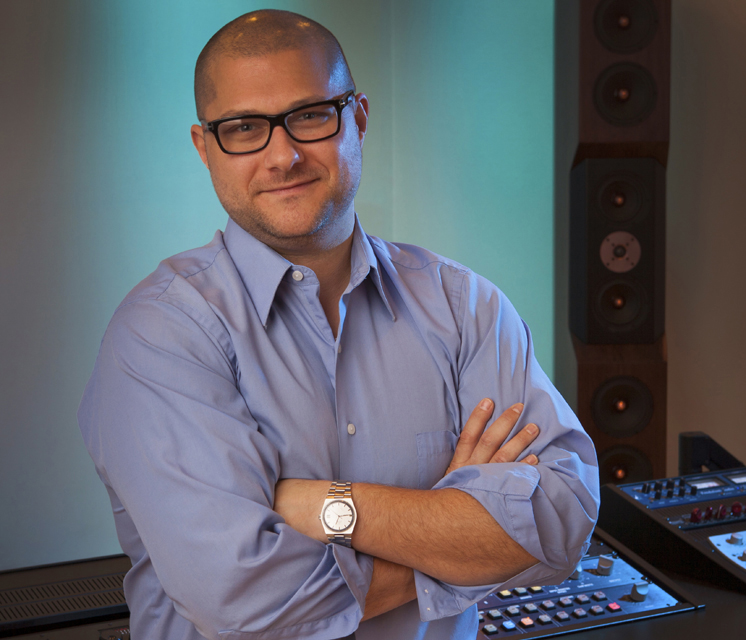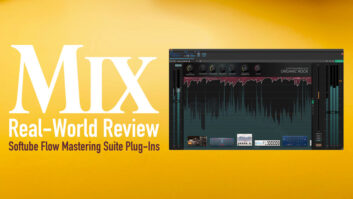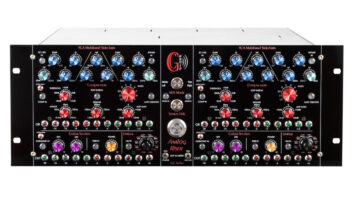
Edmeston, NY – October 29, 2014 – Mastering engineer Colin Leonard works a lot with major record labels on singles, albums and custom masters for the very latest music videos – as well as hit Indie artist projects. At his Atlanta, GA, ‘SING Mastering‘ studio he’s built a unique and highly customized analog setup based around a core of Dangerous Music’s Master transfer console and Dangerous Monitor combination, and the Dangerous BAX EQ – among many other pieces of choice equipment and speakers. As Leonard says “It’s a no compromise mastering facility.” Some of Leonard’s recent mastering credits include Echosmith, Kimbra, Icona Pop, Leona Lewis, Justin Bieber, Mastodon and Mystery Skulls, working with record labels such as Warner Bros., Sony Music, Atlantic Records, Republic Records and Universal Records.
“I am currently using a Dangerous Master, a Dangerous Monitor and a Dangerous BAX EQ,” states Leonard. “I’ve never mastered a song without a Dangerous Master! And I can’t imagine it (laughs). The Master is one of those pieces that is just the ‘heart’ of the system. When I came into mastering, that was the very first mastering console that I used. The Master is an awesome piece for me.”
Although he has lots of gear, and most of it quite unique, he still goes for less-is-more, “I’m kind of a simplicity guy, all of the processing on my masters is analog. I don’t usually use plug-ins, and I try to keep cables real short between each piece of equipment, we make our own cables and use quality materials,” he says.
Inside the Master
Leonard has compared “Mid-Side” systems and finds the implementation of the “S&M” feature built into the Dangerous Master far superior, “With the S&M feature on the Master, you can really fix some problems in mixes, and address balance issues. I have a couple EQs that I can use with that circuit to adjust stuff in the side, or if I need to bring a vocal out in the middle I can do that. It’s a really great sounding circuit. Comparing it to Mid-Side processors in the digital realm I just think it’s a ‘Day and Night’ difference. I don’t really know why technically the Mid-Side available on plug-ins sound so weird to me, but it does. The biggest thing is, you can kind of get away with cutting dBs in a plug-in, but as soon as you try to boost the Mid or the Side it sounds terrible to me; With analog, there is a lot more headroom. To me, the Dangerous Master’s Mid-Side circuit sounds a lot better.”
Describing how his outboard connects to the Dangerous Master, Leonard says, “I can either run into the input of the Master or I can run into the input of some other gear to have a different sound. I can bypass the input stage on the Master if I want to and run into the inserts. The inserts are set up really simply using my six different EQs and a couple of compressors. I don’t do a lot of compression, I am more of an EQ person, especially these days when mixes are usually compressed already! (laughs) But I have a lot of EQ flavors.”
And finally, he relates, “Another thing that’s really cool about the Dangerous Monitor in combination with the Dangerous Master is the ‘input monitor offset’. That way I can take an unprocessed mix and turn it up as loud as my master in the analog domain with an offset, and I can compare the original mix to the master at exactly the same volume. That’s really important. Without the offset you’re comparing the mix that might be 6dB quieter with a master that’s loud. It’s kind of impossible to compare the two sonically. Other than just saying, ‘Wow! That one’s a lot louder!’ When you use both the Dangerous Master and Monitor to do that, it’s seamless, Dangerous Music thought it out really well.”
BAX And All That
Although on SING Mastering’s website Leonard alludes to some ‘secret boxes’ that he uses to get his sound, he quickly relates, “The Dangerous BAX, honestly, is one of my favorite EQs for real small adjustments and it has some really unique EQ curve shapes obviously. I think it can be really great in combination with other EQs. I actually use the BAX differently than other people I’ve talked to, I use it at the beginning of my chain and use it as a really broad stroke and then fine tune afterwards with other pieces of gear.
Monitoring The Dangerous Way
On his history with the Dangerous Monitor, Leonard recalls, “Actually when I started mastering I was just lucky to have access to a Chris Muth 2040 monitoring setup. After a few years I changed to the Dangerous Monitor, and at first it was a little weird because it has a stepped volume control, and the Muth 2040 that I had used had originally been ordered with the ‘Alps big blue’ control which was a continuous pot, so it took me a little while to get used to the Monitor’s stepped volume control. But then the accuracy and repeatability of the stepped control on the Monitor was awesome.
Adding a bit more background, he adds, “The Muth 2040 didn’t have a DAC built in, so you had to use a ‘room’ DAC, which was normally a less sophisticated DAC in those days because when you were switching back and forth between digital sources, an old high-end DAC usually had some delay while switching and re-clocking so the thing to use was a DAC that was fast. The DAC that’s built into the Dangerous Monitor is really good and it’s fast. I really fell in love the with Dangerous Monitor. For me it’s an improvement over the 2040, having used both of them. The DAC in the Monitor is my only monitor path DAC.”
Leonard has a last point on controlling his listening, first, “I love the Dangerous Monitor for its transparency and accuracy with tracking with the stepped volume control. As a mastering engineer it’s really a necessity to have instantaneous digital switching with a common converter – and that’s what the Monitor supplies! I can get real world comparisons between different sources at the same time instantaneously with the same converter.”
Customized Is The Deal
Customizing practically all his equipment puts Leonard is a unique position of knowing his own gear better than anyone could, but it isn’t that unusual in a mastering studio he relates, “I am really picky about equipment and I think that incremental improvements add up at the end of the day. I try to make the quality of my gear as good as possible, and with mastering kind of everything is custom anyway it seems.”
He reveals some of his top outboard pieces beyond his ‘Dangerous BAX starting-point’, “I have a couple custom Neumann W495B units, a set of modified Neumann OE DUO EQs, some old Motown style inductor EQs that are customized Electrodyne circuits, a Fred Forsell Millennia NSEQ-2, and an SPL PQ. My speakers are custom too,” adds Leonard. “They are the last pair of the Tyler Acoustics D1’s, they were made by Ty Lashbrook, with two Pass Labs amps drive them and custom crossovers with cabinet modifications. Then I have a couple custom subwoofers, the sub cabinets are designed by Ty with the servo drivers designed by Danny Richie.”
As in any great studio, gear is often only half the equation, “The SING Mastering room is a very cool design, it uses a ratio by acoustician M.M. Louden, he’s kind of the king of rectangular room ratios,” states Leonard. “My room is really an optimized Louden ratio. It’s over 30 feet long and really wide and has tall ceilings, it’s a big, open natural space. It’s a ‘dead end’ in the front and a ‘live end’ in the back, which is pretty common for mastering rooms.”
Check out SING Mastering and more about engineer Colin Leonard at: http://www.singmastering.com
About Dangerous Music
Dangerous Music, Inc. designs and builds award-winning hardware products that are indispensable to any DAW-based recording, mixing or mastering environment. The Company pioneered the concept of the dedicated analog summing buss for digital audio workstations with the Dangerous 2-Bus in 2001. Today, Dangerous Music offers a wide range of products for recording, mastering, mixing and post-production facilities, all designed and built with mastering-quality standards and a practical aesthetic. Key products include the Dangerous 2-Bus and 2-Bus LT, Dangerous Monitor ST-SR, Dangerous D-Box, Dangerous Master, Dangerous Liaison, Dangerous Monitor, Dangerous Source, Dangerous BAX EQ, and the Dangerous Compressor.
For more information on Dangerous Music visit http://www.dangerousmusic.com phone 845-202-5100 or email: info@dangerousmusic.com
All trademarks are the property of their respective holders. Description and specifications are subject to change without notice.







